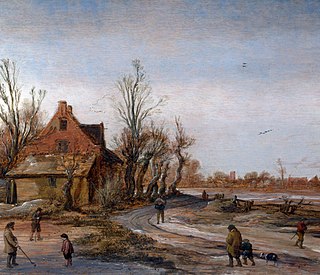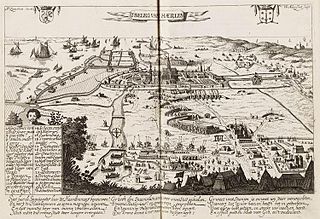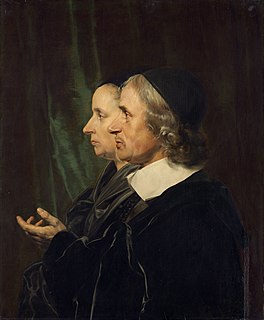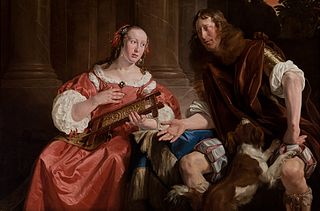
Salomon van Ruysdael was a Dutch Golden Age landscape painter. He was the uncle of Jacob van Ruisdael.

Esaias van de Velde was a Dutch landscape painter.

Cornelis Hendriksz Vroom was a Dutch Golden Age landscape painter.

Pieter de Molijn was a Dutch Golden Age painter and engraver born in England.

The Haarlem Guild of Saint Luke was first a Christian, and later a city Guild for a large number of trades falling under the patron saints Luke the Evangelist and Saint Eligius.

Dirck de Bray was a Dutch Golden Age painter.

Roelof van Vries, was a Dutch Golden Age painter.

Laurens Vincentsz van der Vinne (1658–1729) was an 18th-century painter from the Northern Netherlands.

Jacob Vrel, was a Dutch Golden Age genre painter.

Willem Outgertsz. Akersloot (1600–1661) was a Dutch Golden Age engraver.

Nicolaes Molenaer (1630–1676) was a Dutch Golden Age painter.

Willem Romeyn, was a Dutch Golden Age landscape painter.

Jan Vermeer van Haarlem the Elder, was a Dutch Golden Age landscape painter and the father of Jan Vermeer van Haarlem the Younger.

Wouter Knijff, was a Dutch Golden Age landscape painter.
Hendrik Meijer (1744–1793) was an 18th-century painter from the Northern Netherlands.

Ferdinand de Braekeleer, sometimes spelled as Ferdinand de Braeckeleer, was a Flemish painter. He is known for his historical paintings and is called 'the Elder' to distinguish him from his son with the same name, who was also a painter.

Jean de la Chambre, was a Dutch Golden Age engraver and calligrapher best known today for his portrait by Frans Hals, which is in the collection of the National Gallery in London.

Henri Frédéric Boot, was a Dutch painter and printmaker mostly active in Haarlem.






















